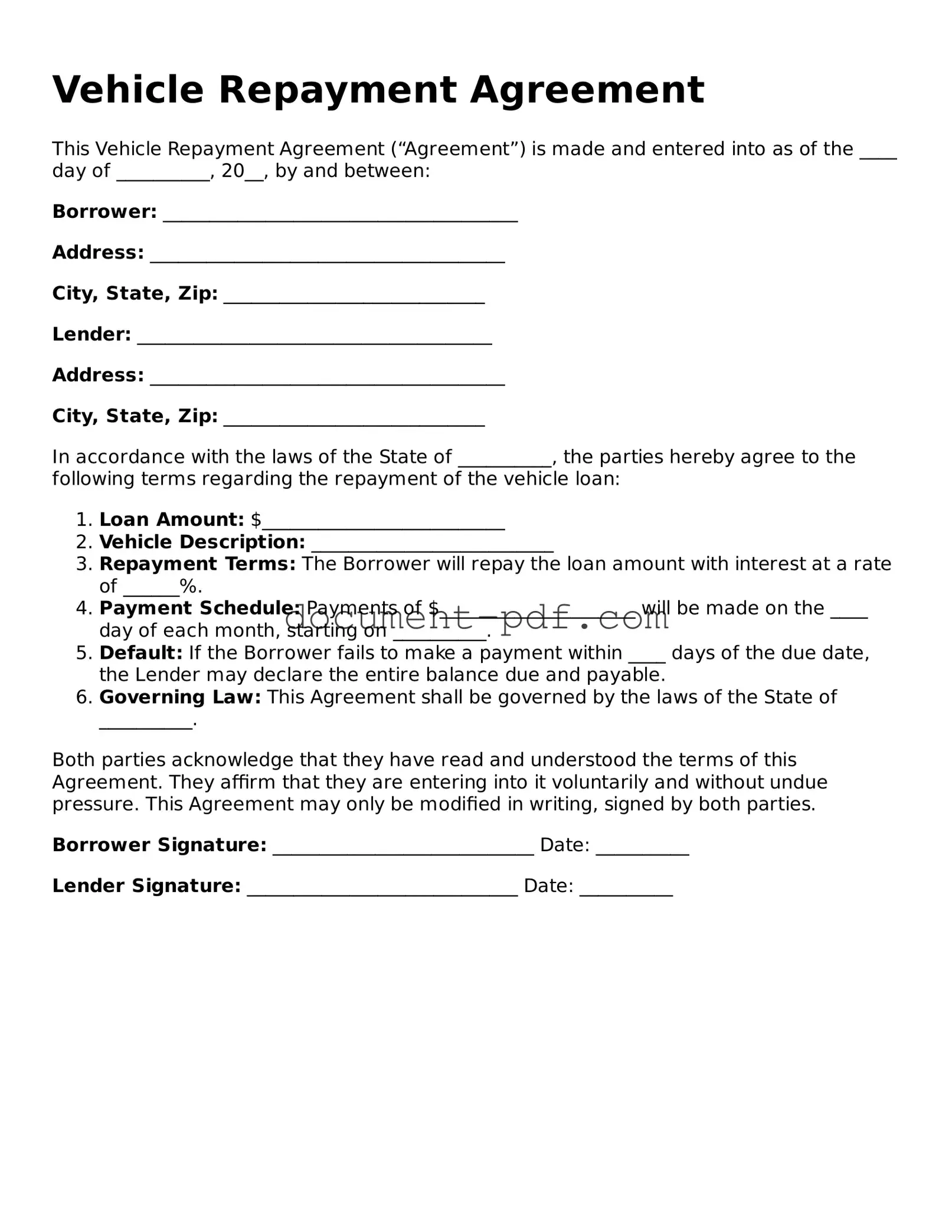Vehicle Repayment Agreement
This Vehicle Repayment Agreement (“Agreement”) is made and entered into as of the ____ day of __________, 20__, by and between:
Borrower: ______________________________________
Address: ______________________________________
City, State, Zip: ____________________________
Lender: ______________________________________
Address: ______________________________________
City, State, Zip: ____________________________
In accordance with the laws of the State of __________, the parties hereby agree to the following terms regarding the repayment of the vehicle loan:
- Loan Amount: $__________________________
- Vehicle Description: __________________________
- Repayment Terms: The Borrower will repay the loan amount with interest at a rate of ______%.
- Payment Schedule: Payments of $_____________________ will be made on the ____ day of each month, starting on __________.
- Default: If the Borrower fails to make a payment within ____ days of the due date, the Lender may declare the entire balance due and payable.
- Governing Law: This Agreement shall be governed by the laws of the State of __________.
Both parties acknowledge that they have read and understood the terms of this Agreement. They affirm that they are entering into it voluntarily and without undue pressure. This Agreement may only be modified in writing, signed by both parties.
Borrower Signature: ____________________________ Date: __________
Lender Signature: _____________________________ Date: __________
